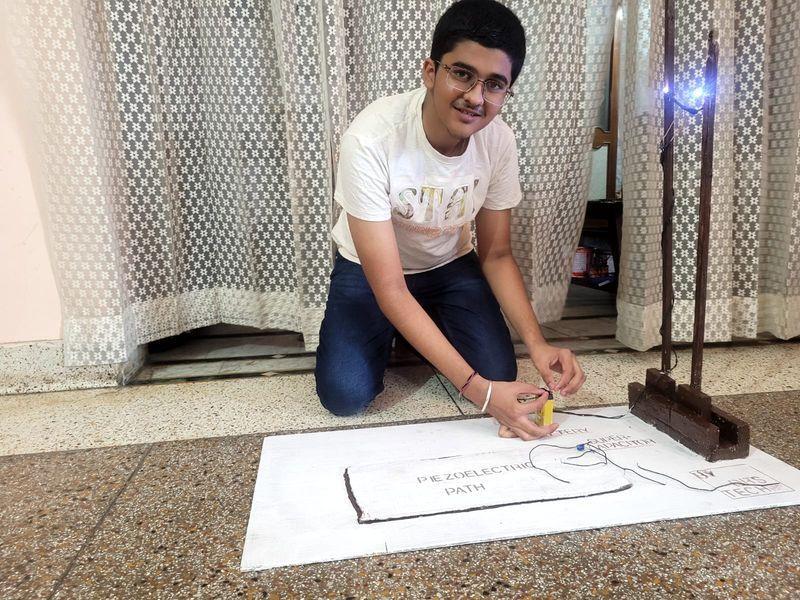
Hoshiarpur Student Builds Device to Generate Power from Footsteps
In a remarkable display of innovation and creativity, a student from Hoshiarpur, Punjab, has developed a revolutionary project that could transform the way we think about power generation. Sanchit, a Class 8 student, has created a device that harnesses energy from a simple act we all perform daily – walking. With his project, “Power beneath our feet,” Sanchit has caught the attention of local officers, scientists, and enthusiasts alike, showcasing his remarkable talent in science and technology.
Sanchit’s innovative device uses piezoelectric technology to convert the kinetic energy generated by footsteps into electricity. This energy can then be used to power small devices, such as mobile phones, LED lights, or even small appliances. The implications of this technology are vast, as it could potentially provide a sustainable and renewable source of energy for remote areas or even urban dwellings.
The concept of piezoelectricity is not new, but Sanchit’s application of it to generate power from footsteps is a novel and groundbreaking idea. Piezoelectric materials generate an electric charge when subjected to mechanical stress, such as pressure or vibration. In this case, Sanchit’s device uses sensors to detect the pressure and movement generated by footsteps, which is then converted into electricity.
The device consists of a special plate made of piezoelectric material, which is connected to a circuit board. When a person walks on the plate, the pressure and movement generate a small electric current, which is then stored in a battery. The battery can be used to power a variety of devices, and Sanchit has successfully tested his device by powering a small LED light and even a mobile phone.
Sanchit’s project has not gone unnoticed, with local officers and scientists expressing admiration for his ingenuity and creativity. According to Sanchit, his inspiration for the project came from his fascination with science and technology. “I have always been interested in science and technology, and I wanted to find a way to apply it to everyday life,” he said in an interview. “I thought, why not use something as simple as walking to generate power?”
The potential applications of Sanchit’s technology are vast. In remote areas where access to electricity is limited, his device could provide a sustainable and renewable source of energy. In urban areas, it could be used to power small devices, reducing reliance on traditional energy sources. Additionally, Sanchit’s device could also be used in the context of fitness and health, as it could track and generate energy from an individual’s daily physical activity.
Sanchit’s achievement is a testament to the power of innovation and creativity in the field of science and technology. His project demonstrates that even the simplest of ideas can have a significant impact when combined with determination and hard work.
As Sanchit continues to develop and refine his technology, it will be exciting to see the potential applications and implications of his invention. Who knows, maybe one day we’ll see his device being used to power homes and businesses around the world.






